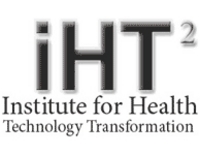 Patient engagement improves health outcomes. But deploying patient empowerment and engagement tools involve many challenges, among them: privacy, security, integrity of medical records, liability, and payment. These have prevented health providers – doctors and hospitals – from adopting strategies to more closely engage patients.
Patient engagement improves health outcomes. But deploying patient empowerment and engagement tools involve many challenges, among them: privacy, security, integrity of medical records, liability, and payment. These have prevented health providers – doctors and hospitals – from adopting strategies to more closely engage patients.
From the patient’s perspective, though, many patients have project-managed their own approaches to engagement with online and mobile health tools, such as participating in peer-to-peer health social networks, downloading and using mobile health apps, and monitoring calories, weight and sleep through devices like FitBit, Zeo, and the Withings scale.
The Institute for Health Technology Transformation (iHT2) published the report, Top 10 Things You Need to Know About Engaging Patients. The paper presents a plethora of research findings from a wide array of patient engagement studies brought to light by AARP, California HealthCare Foundation, Gallup, the Pew Foundation, as well as best practices from Cleveland Clinic, Mass General, the Mayo Clinic, among others.
Health engagement is so important because, as Dr. Judith Hibbard, an expert in patient activation, has found, the more patients who more actively manage their health, the more these health citizens engage in prevention, healthy behaviors, self-management of diagnosed diseases, and health information seeking.
AARP has learned, too, that activated patients achieve outcomes, such as reduced readmissions to hospitals, medical errors, and better care coordination between providers.
For providers, there are many benefits to bolstering patient engagement which deliver ‘soft’ ROI:
- Bolstering patient loyalty
- Attracting new patients
- Improving outcomes
- Improving employee retention
- Attracting more qualified employees
- Enhancing institutional reputation.
Gallup’s research into patient engagement makes the case that these kinds of benefits are predictors of hospital performance in hard dollar terms such as EBITDA per adjusted admission and net revenue per adjusted admission.
Health Populi’s Hot Points: Engaging with patients was much more difficult before the era of the Internet (Health 2.0) and social networks (Health 2.0). iHT2’s report’s “top 10 things'” to know about patient engagement features large doses of technology recommendations:
- Provide more online health information to patients and prospects
- Engage in social networks online with patients
- Be savvy about consumer segmentation (that is, one approach doesn’t fit all patients)
- Better support family caregivers
- Leverage the trust that patients and families have for care providers
- Use mobile platforms where appropriate to meet patients where they ‘are’
- Protect patient privacy and security
- Use available tools like Facebook, Twitter and YouTube.
Today, patient engagement is a business imperative for health providers who must meet patients where they live, work and play. That’s the only way to inspire and support whole health, optimal health outcomes, and lower costs.




 I'm in amazing company here with other #digitalhealth innovators, thinkers and doers. Thank you to Cristian Cortez Fernandez and Zallud for this recognition; I'm grateful.
I'm in amazing company here with other #digitalhealth innovators, thinkers and doers. Thank you to Cristian Cortez Fernandez and Zallud for this recognition; I'm grateful. Jane was named as a member of the AHIP 2024 Advisory Board, joining some valued colleagues to prepare for the challenges and opportunities facing health plans, systems, and other industry stakeholders.
Jane was named as a member of the AHIP 2024 Advisory Board, joining some valued colleagues to prepare for the challenges and opportunities facing health plans, systems, and other industry stakeholders.  Join Jane at AHIP's annual meeting in Las Vegas: I'll be speaking, moderating a panel, and providing thought leadership on health consumers and bolstering equity, empowerment, and self-care.
Join Jane at AHIP's annual meeting in Las Vegas: I'll be speaking, moderating a panel, and providing thought leadership on health consumers and bolstering equity, empowerment, and self-care.